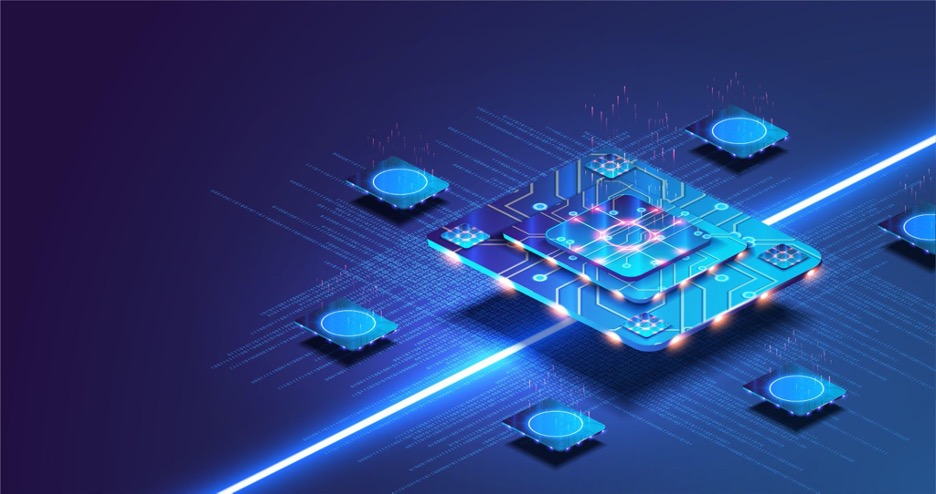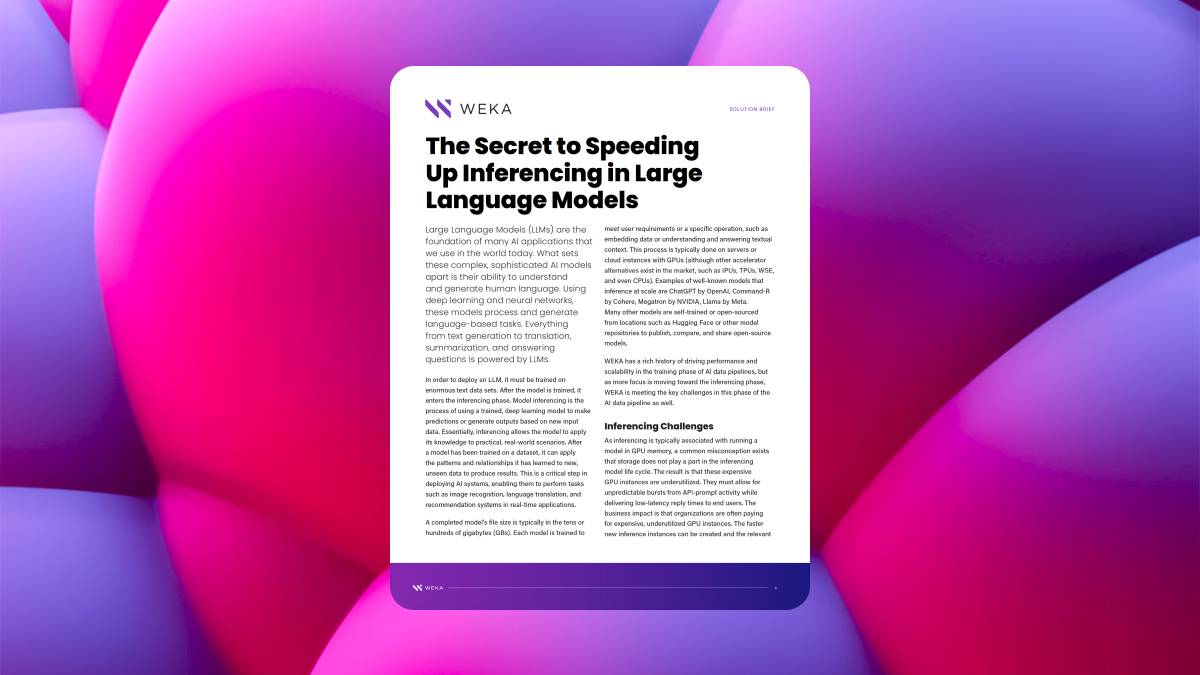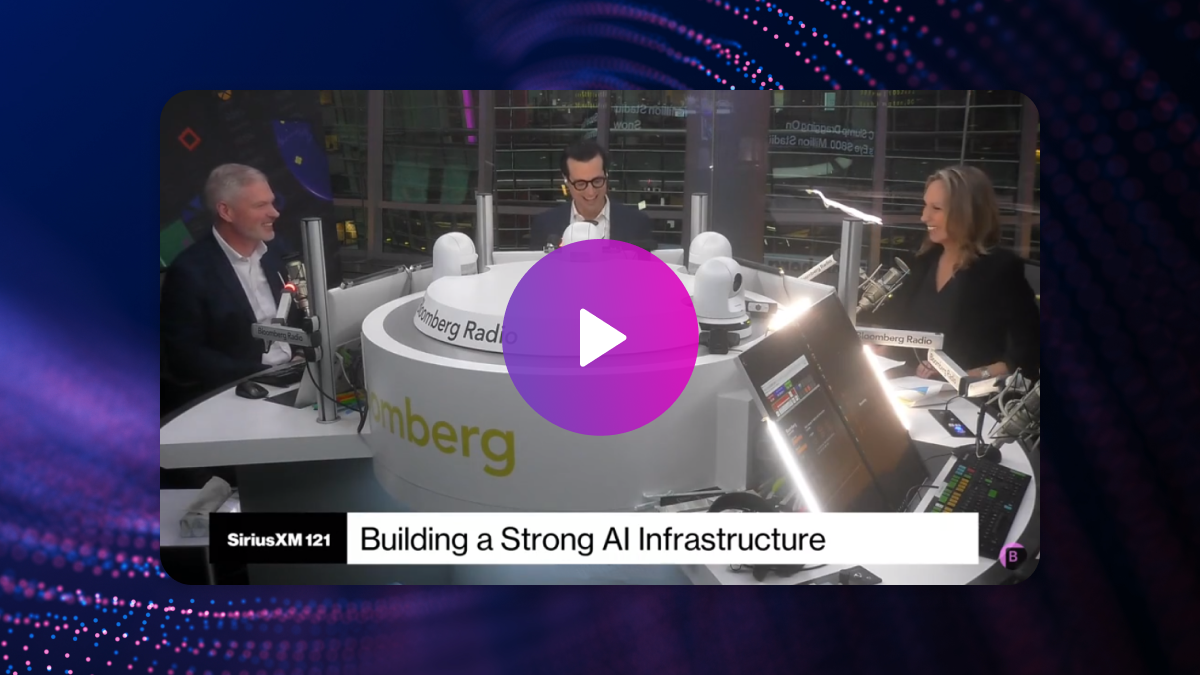Why Use a GPUs for Machine Learning? A Complete Explanation

Wondering about using a GPU for machine learning? We explain what a GPU is and why its computational power is well-suited for machine learning.
Do I need a GPU for machine learning? Machine learning, a subset of AI, is the ability of computer systems to learn to make decisions and predictions from observations and data. A GPU is a specialized processing unit with enhanced mathematical computation capability, making it ideal for machine learning.
What Is The Role of Computer Processing and GPU in Machine Learning?
Machine Learning is an important area of research and engineering that studies how algorithms can learn to perform specific tasks at the same level or better than humans. The emphasis here is on learning and how machines can learn in different contexts, with other inputs, and how to do different things. Machine learning is a discipline that has been around for decades and serves as a subset of the larger area of artificial intelligence.
AI and machine learning have a long history of research and development, both in academia, enterprise businesses, and public imagination. For most of the 1960s through the 1990s, however, intelligent machines and effective learning faced an uphill battle in widespread mainstream adoption. Specialized applications like expert systems, natural language processing, and robotics employed learning techniques in one form or another, but machine learning seemed like an esoteric area of study outside of these areas.
As we entered the 21st century, the ecosystem of hardware and software was such that considerable advances in learning development occurred. This leap forward was due, in part, to a few primary technologies:
- Neural networks: While neural networks aren’t a new concept, advances in neural network technology facilitated the development of AI “brains” that could support more advanced decision-making. In short, a neural network models problems through the use of interconnected nodes and granular decision-making that can represent small parts of larger, more complex problem-solving models. Therefore, these networks can facilitate the management of more complex problems, like image pattern recognition, than linear algorithms are able to.
- Big data analytics: The term “Big Data” is thrown around quite a bit, but it’s hard to overstate how important big data is to the development of machine learning. As more businesses and technologies collect more data, developers find themselves with more extensive training data sets to support more advanced learning algorithms.
- High-performance cloud platforms: Cloud infrastructure does more than offer off-site and decentralized storage and computing power. It offers the potential for comprehensive data gathering and analysis over a variety of different sources. Hybrid cloud environments, in particular, can draw data from a variety of cloud and on-premise sources to serve as a foundation for advanced applications.
As technology advances, however, we’ve seen a considerable uptick in the computing power available for cloud applications. The evolution from cloud storage to online SaaS apps has given away to powerful enterprise cloud computing that can support some of the most processor-intensive workloads.
An essential part of training learning algorithms is the use of training data. The leveraging of massive data stores in cloud environments gives developers plenty of resources to that end. Another significant part of machine learning is using enough processing power to process that enormous volume of information to teach machines how to act and how to power the machines when they operate in real-world scenarios.
Furthermore, the demand for processing power only becomes more pronounced as engineers start using different learning techniques. Deep Learning, for example, uses complex neural networks to break down complex tasks into layers or smaller solutions. When you’re processing terabytes of data to support these types of learning, much less the real-time decisions of algorithms, you need to utilize powerful hardware.
Why Use a GPU vs CPU for Machine Learning?
The seemingly obvious hardware configuration would include faster, more powerful CPUs to support the high-performance needs of a modern AI or machine learning workload. Many machine learning engineers are discovering in determining whether to use a CPU or GPU for machine learning that modern CPUs aren’t necessarily the best tool for the job. That’s why they are turning to Graphical Processing Units (GPUs).
On the surface, the difference between a CPU and a GPU is that GPUs support better processing for high-resolution video games and movies. However, when it comes to handling specific workloads, it quickly becomes apparent that their differences are more pronounced.
Both CPUs and GPUs work in fundamentally different ways:
- A CPU handles the majority of the processing tasks for a computer. As such, they are fast and versatile. Specifically, CPUs are built to handle any number of required tasks that a typical computer might perform: accessing hard drive storage, logging inputs, moving data from cache to memory, and so on. That means that CPUs can bounce between multiple tasks quickly to support the more generalized operations of a workstation or even a supercomputer.
- A GPU is designed from the ground up to render high-resolution images and graphics almost exclusively—a job that doesn’t require a lot of context switching. Instead, GPUs focus on concurrency, or breaking down complex tasks (like identical computations used to create effects for lighting, shading, and textures) into smaller subtasks that can be continuously performed in tandem.
This support for parallel computing isn’t just an increase in power. While CPUs are (theoretically) shaped by Moore’s Law (which predicts a doubling of CPU power every two years), GPUs work around that by applying hardware and computing configurations to a specific problem. This approach to parallel computing, known as Single Instruction, Multiple Data (SIMD) architecture, allows engineers to distribute tasks and workloads with the same operations efficiently across GPU cores.
So why do you need a GPU for machine learning? Because at the heart of machine training is the demand to input larger continuous data sets to expand and refine what an algorithm can do. The more data, the better these algorithms can learn from it. This is particularly true with deep-learning algorithms and neural networks, where parallel computing can support complex, multi-step processes.
What Should You Look for in a GPU for ML?
Since GPU technology has become such a sought-after product not only for the machine learning industry but for computing at large, there are several consumer and enterprise-grade GPUs on the market.
Generally speaking, if you are looking for a GPU that can fit into a machine-learning hardware configuration, then some of the more important specifications for that unit will include the following:
- High memory bandwidth: Since GPUs take data in parallel operations, they have a high memory bandwidth. Unlike a CPU that works in sequencing (and that mimics parallelism through context switching), a GPU can take a lot of data from memory simultaneously. Higher bandwidth with a higher VRAM is usually better, depending on your job.
- Tensor cores: Tensor cores allow for faster matrix multiplication in the core, increasing throughput and reducing latency. Not all GPUs come with tensor cores, but as the technology advances, they are more common, even in consumer-grade GPUs.
- More significant shared memory: GPUs with higher L1 caches can increase data processing speed by making data more available—but it is costly. GPUs with more caches are generally preferable, but it is a trade-off between cost and performance (especially if you get GPUs in bulk.)
- Interconnection: A cloud or on-premise solution utilizing GPUs for high-performance workloads will typically have several units interconnected with one another. However, not all GPUs play nicely with one another, so understand that the best approach is to ensure that they can work together seamlessly.
It’s important to note that machine learning and GPU buying isn’t something that large-scale operations typically do unless they have their own dedicated processing cloud. Instead, organizations running machine learning workloads will purchase cloud (whether public or hybrid) space tailored for HPC (high-performance computing). These cloud providers will (ideally) include high-performance GPUs and fast memory in their platform.
WEKA: GPU-Accelerated Processing for High-Performance Machine Learning
In the realm of machine learning and high-performance computing (HPC), the speed and efficiency of data handling are paramount. As scientific research and technical applications increasingly rely on complex computational processes, the need for robust HPC infrastructure capable of keeping pace with the demands of machine learning algorithms is more critical than ever. WEKA’s innovative solutions are designed to unleash the full potential of HPC data performance, enabling researchers and technologists to accelerate their machine learning projects and scientific endeavors.
Enhancing Data Throughput and Performance
WEKA’s platform stands out with its impressive capability to deliver single client performance of up to 162GB/sec throughput and 2 million IOPS, alongside proven cloud performance reaching up to 2TB/sec. Such high-performance metrics are essential for machine learning applications where data velocity and volume dramatically impact the training and deployment of models. This level of performance ensures that machine learning practitioners can process large datasets more efficiently, reducing the time from data ingestion to insight.
Reducing Costs with Intelligent Data Management
Cost efficiency is a crucial consideration in maintaining competitive HPC storage. WEKA addresses this through automated tiering to object storage, which integrates seamlessly with backup, disaster recovery, and cloud bursting capabilities. This strategic approach not only lowers the total cost of ownership (TCO) but also enhances the flexibility and scalability of storage solutions, critical factors for machine learning environments that require vast amounts of data to be accessible yet secure.
Supporting Extensive Research Needs
Machine learning research demands a highly flexible and capable infrastructure. WEKA supports this requirement by accommodating thousands of concurrent compute clients and is compatible with common HPC network interfaces and tools such as Infiniband, Ethernet, MPI IO, HDF5, and NetCDF. This capability ensures that there are virtually no limits on the scope or scale of research projects, allowing machine learning algorithms to be trained, tested, and deployed efficiently across various computational settings.
Simplifying Management with Radical Efficiency
The management of extensive data volumes can often become a bottleneck in fast-paced research environments. WEKA simplifies this aspect radically, enabling the management of data ranging from tens of terabytes to multiple exabytes with minimal overhead. The platform is engineered for extreme performance across any I/O workload, requiring zero tuning, eliminating metadata bottlenecks, and nearly erasing day-to-day management tasks. This simplicity empowers machine learning professionals to focus more on innovation and less on infrastructure management.
Flexibility Across Environments
Flexibility in deployment environments is another pillar of effective machine learning infrastructure. WEKA’s HPC data management platform supports on-premises, public, and hybrid cloud setups, offering unparalleled data portability across multiple cloud platforms. This flexibility ensures that machine learning teams can operate in an environment that best suits their needs, whether for regulatory compliance, cost management, or performance optimization.
As machine learning continues to drive significant advancements in scientific and technical fields, the underlying HPC infrastructure must evolve to support these sophisticated workloads. WEKA’s solutions provide a robust foundation that not only meets today’s machine learning requirements but also anticipates future needs. By delivering high-speed performance, reducing storage costs, enabling extensive research, simplifying data management, and offering flexible deployment options, WEKA is setting a new standard in the industry, empowering researchers and technologists to push the boundaries of what’s possible in machine learning and beyond.
If you’re working with extensive machine- learning or AI workloads and want to learn more about a cloud storage solution that will empower your efforts, contact us to learn more about WEKA
Additional Helpful Resources
CPU vs. GPU – Best Use Cases For Each
GPU in AI, Machine Learning, and Deep Learning
Data Management in the Age of AI
The Infrastructure Behind SIRI & Alexa
MLOps & Machine Learning Pipeline Explained
Deep Learning vs. Machine Learning
NVIDIA GPUDirect® Storage Plus WEKA™ Provides More Than Just Performance
Assessing, Piloting and Deploying GPUs
Microsoft Research Customer Use Case: WEKA™ and NVIDIA® GPUDirect® Storage Results with NVIDIA DGX-2™ Servers
Accelerating Machine Learning for Financial Services
AI Storage Solution
How to Rethink Storage for AI Workloads
Kubernetes for AI/ML Pipelines using GPUs
GPU Acceleration for High-Performance Computing





